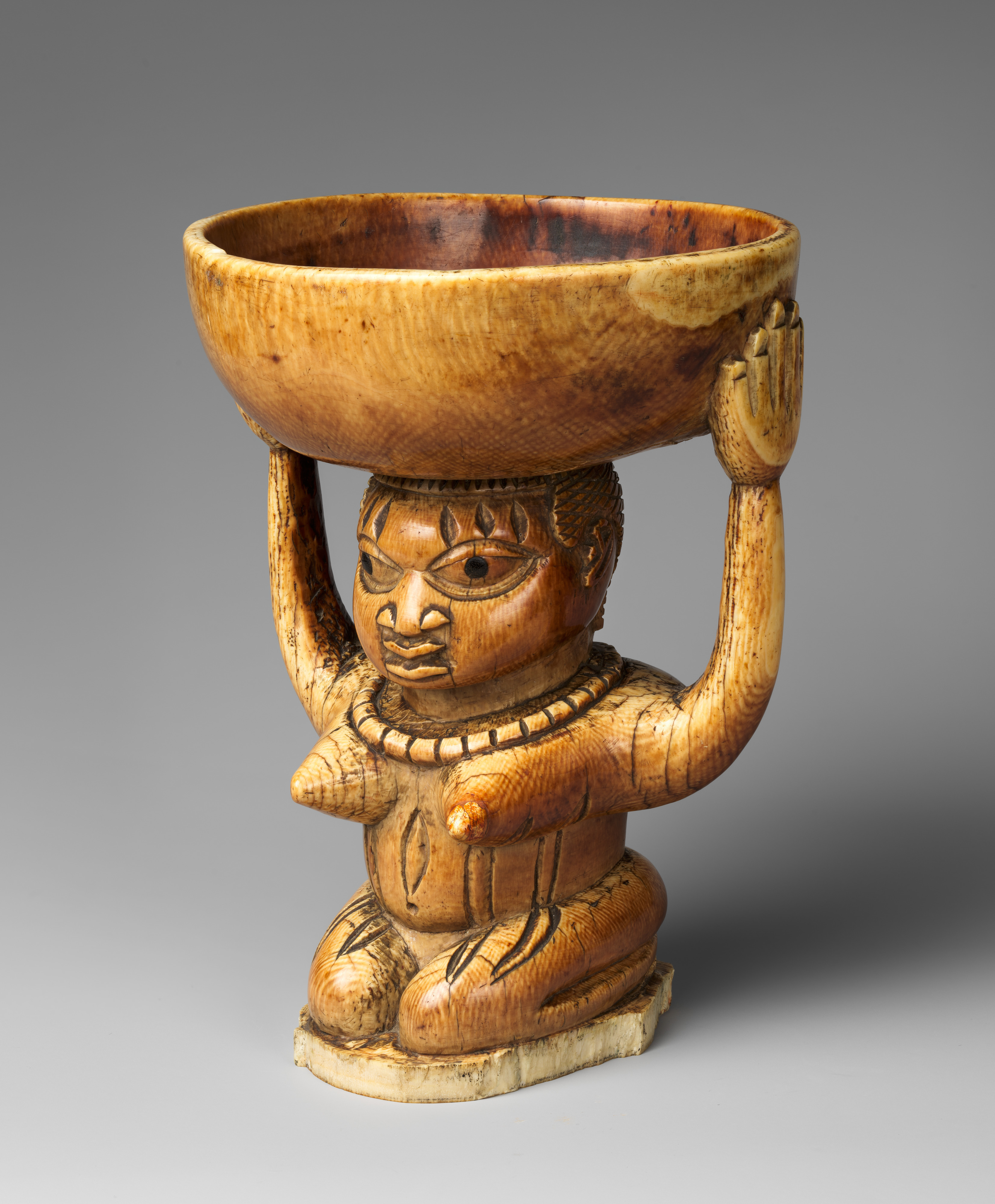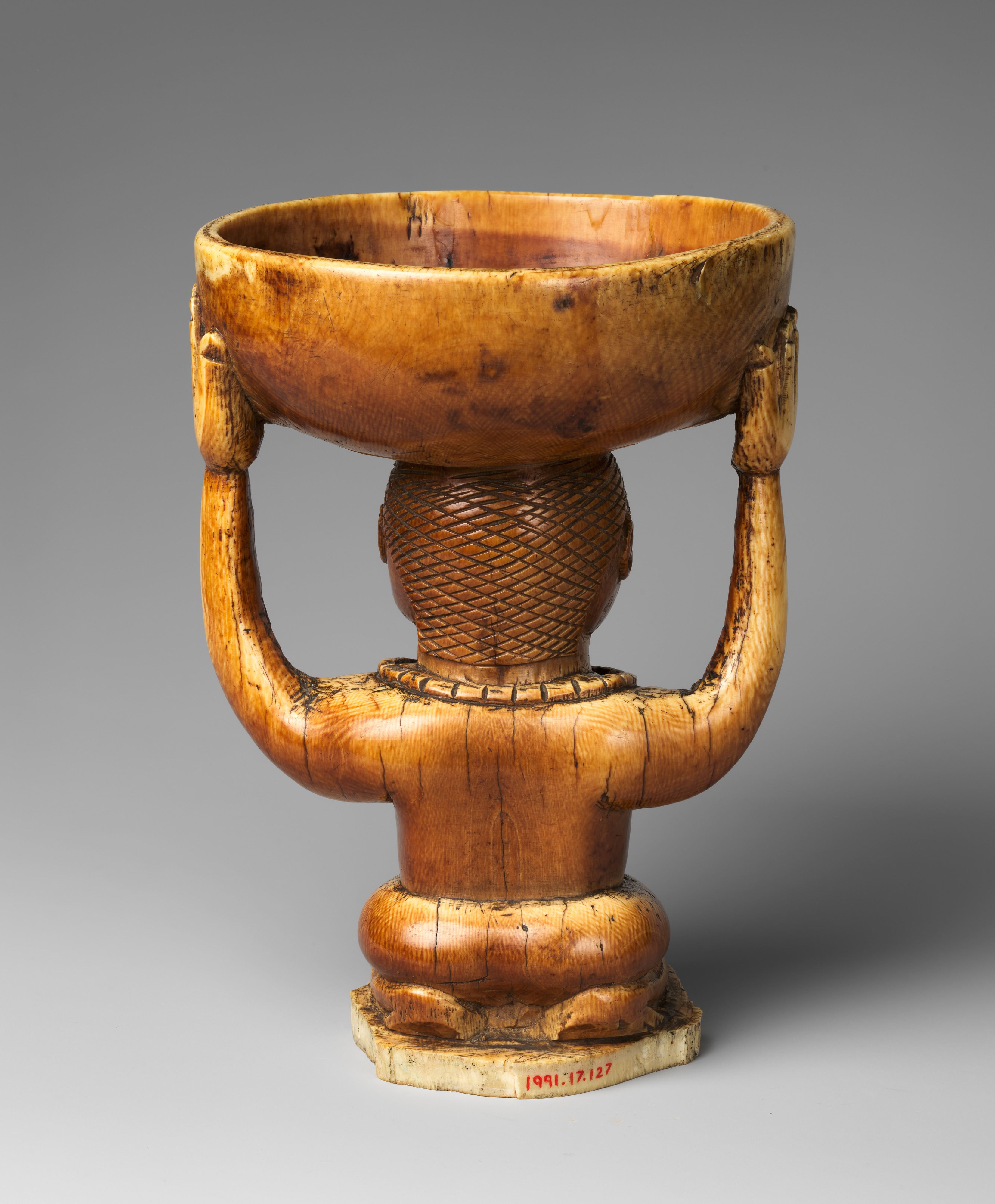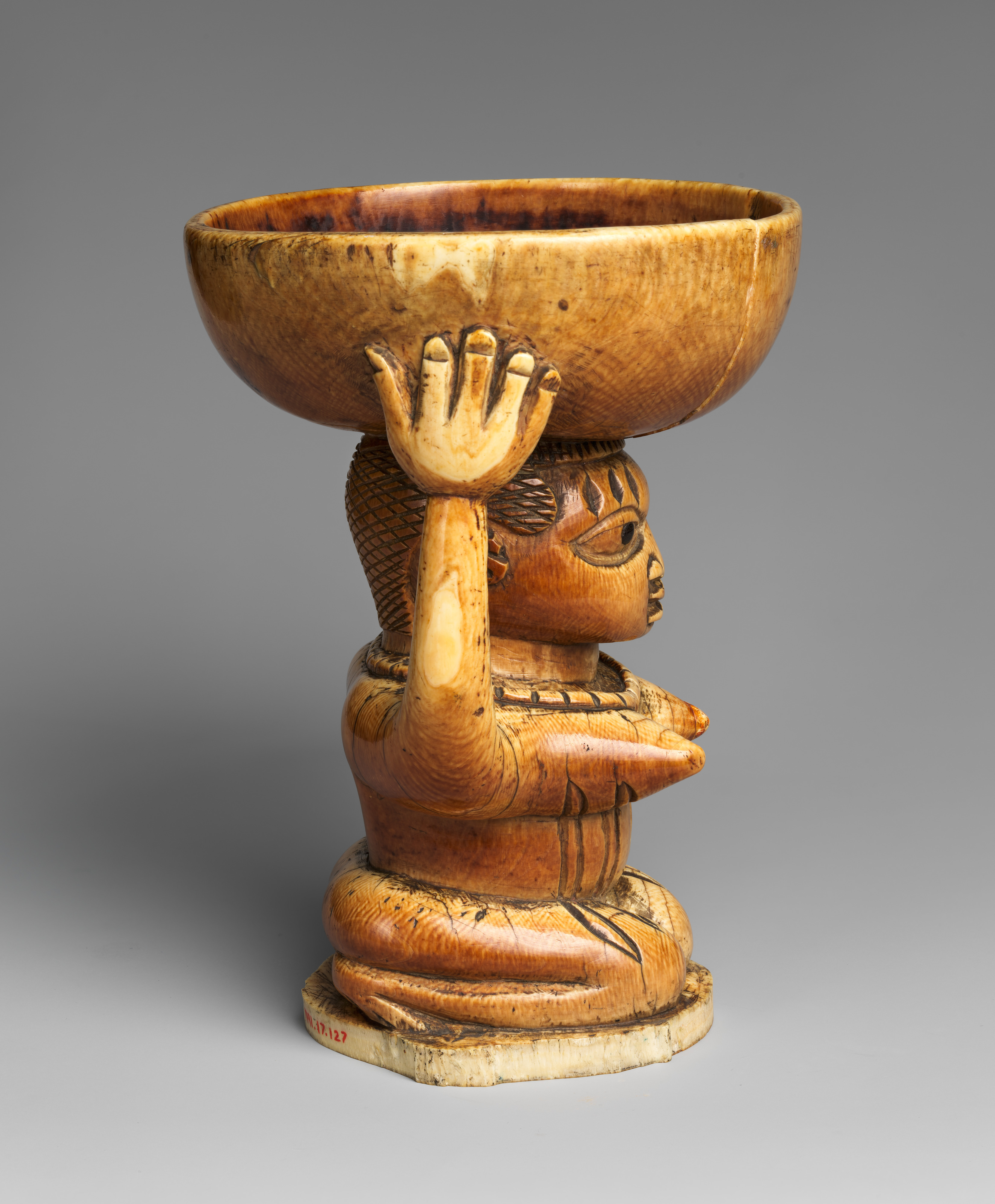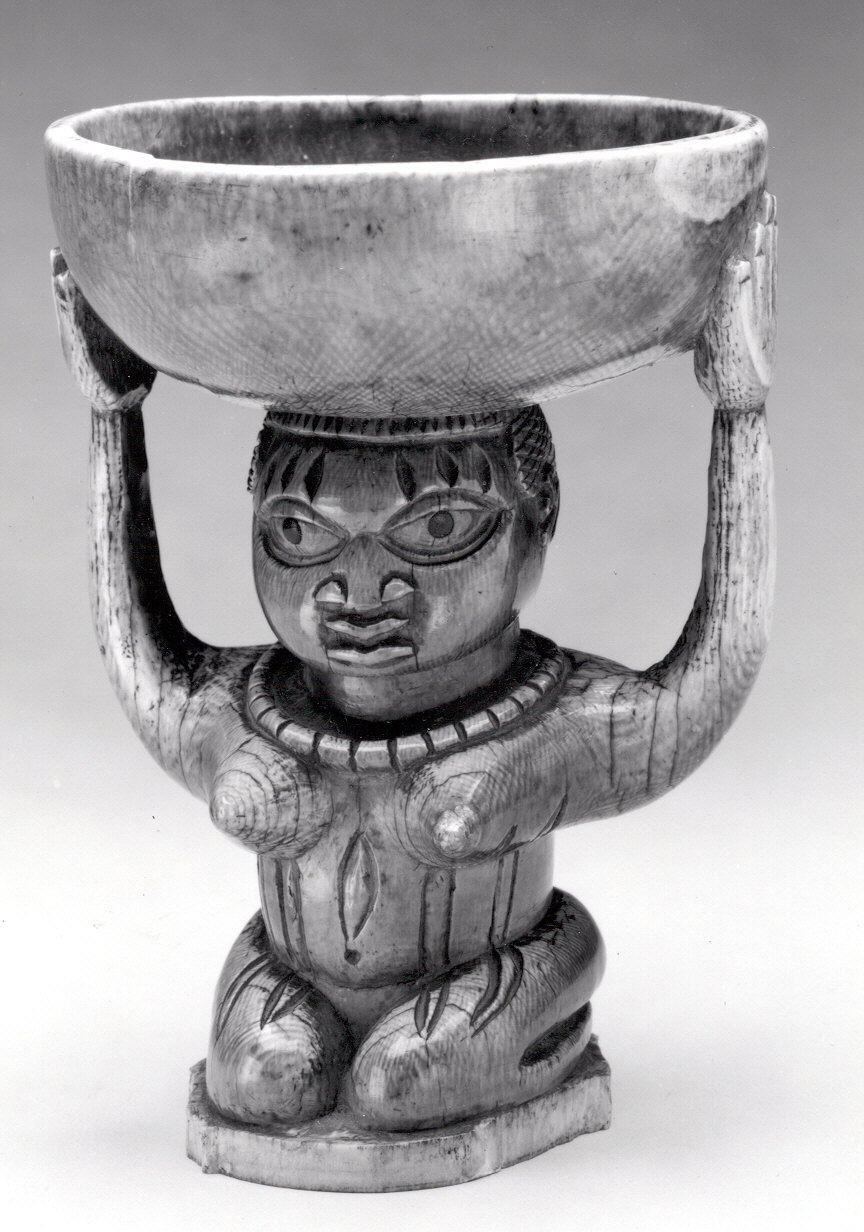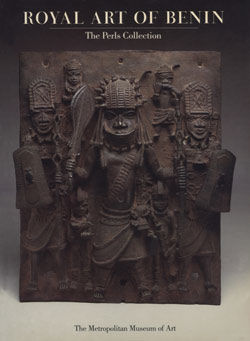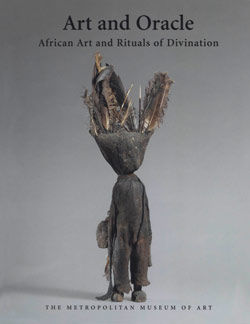Ifa Divination Vessel: Female Caryatid (Agere Ifa)
Not on view
This Yoruba ivory divination vessel (agree Ifa), consisting of a bowl supported by a female caryatid, served as a receptacle for the sixteen sacred palm nuts (ikin). Through this medium, Ifa priests communicated with the god of fate, Orunmila, in order to obtain insights into an individual’s destiny. The investment in costly material and the high-quality artistry apparent in its design elevate it beyond a mere functional implement. This depiction of a woman bearing an offering in a devotional attitude conveys the notion that it was conceived of as a form of prayer to the divine.
This tribute to Orunmila takes the form of a kneeling female figure, whose legs are folded beneath her. She balances an offering bowl on her head and supports it with raised arms, hands held to either side of it. Her strong, broad torso contrasts with the graceful sweep of her attenuated arms. Her facial features are boldly carved, with deeply incised pupils and three vertical cicatrization markings above either eye. A bead necklace that rests on her chest is her only form of bodily adornment.
Most agree Ifa are made out of wood. The relative rarity of ivory agree Ifa, such as this one, suggests that they were either owned by the highest-ranking Ifa priests or served as the ritual art of royalty. On stylistic grounds, this work has been attributed to the Yoruba ivory-carving center at Owo, located on the far-eastern edge of Yorubaland. Owo’s leadership traces its origins to the divine kings of Ife. According to oral traditions, Owo’s founding king was one of the youngest sons of the god Orunmila. Owo emerged as a distinctive regional artistic center, specializing in ivory carving. Owos acclaimed were Owo’s ivory carvers that their services were sought after by patrons in neighboring regions.
The agere type vessel, which holds and raises the ikin, has been likened to a miniature temple of Orunmila. The caryatid serving as the vessel’s base, here portrayed as a kneeling woman, takes a variety of forms including dancers, musicians, and equestrian figures. These subjects at once reflect the diviner’s clients’ hopes for prosperity and express their gratitude to Orunmila for successful consultations. The female suppliant features in this work is perceived as especially effective in predisposing the gods to act favorably on the suppliant’s behalf, and as an ideal means for expressing thanks.
Further Reading:
Henry J. Drewal, John Pemberton III, and Rowland Abiodun, Yoruba: Nine Centuries of African Art and Thought. Exh. Cat. New York: Center for African Art, 1989
Henry J. Drewal, "Art and Divination Among the Yoruba: Design and Myth," Africana Journal 14, nos. 2-3 (1987)
Kate Ezra, Royal Art of Benin: The Perls Collection, Exh. cat. New York: The Metropolitan Museum of Art, 1992
Alisa LaGamma, Art and Oracle: African Art and Rituals of Divination, New York: The Metropolitan Museum of Art, 2000, Cat. 15.
Due to rights restrictions, this image cannot be enlarged, viewed at full screen, or downloaded.
This artwork is meant to be viewed from right to left. Scroll left to view more.


